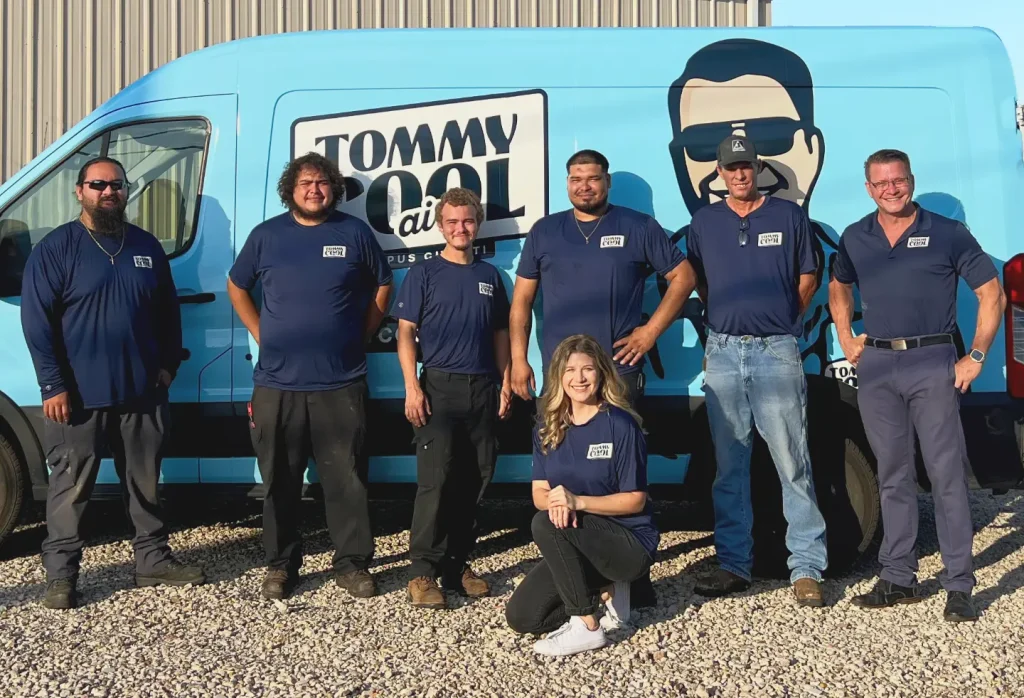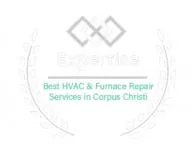Introduction to Indoor Air Quality
Indoor air quality isn’t something you should overlook. It’s about how clean or polluted the air inside your home is. Think about this: we spend a large chunk of our lives indoors, so breathing clean air where we spend most of our time is crucial for our health. Factors contributing to poor indoor air quality include pollutants from outdoor air getting in, and indoor sources like mold, pet dander, and volatile organic compounds from paints or cleaners. Improving your home’s air quality means tackling these issues head-on. This involves identifying the sources of air pollution in your home and using methods like advanced air filtration solutions to keep the air clean. It’s not about overcomplicating things; it’s about making sure the air in your home is safe to breathe, for you and your family.
Why Indoor Air Quality Matters
Indoor air quality matters more than you might think. Every day, whether we’re sleeping, cooking, or just lounging, we breathe in air that could be filled with unseen pollutants. Pollen, pet dander, dust mites, mold spores – these aren’t just outdoor problems. They sneak into our homes, affecting our health without us even realizing it. Poor indoor air quality can lead to a range of health issues, from annoying allergies to more serious conditions like asthma and even long-term lung damage. Moreover, with most people spending a significant amount of their time indoors, ensuring the air inside your home is clean isn’t just a luxury; it’s a necessity for good health. Whether it’s reducing potential triggers for asthma attacks or simply wanting to breathe cleaner, fresher air, improving your home’s air quality is a step toward a healthier living environment for you and your family.
Understanding Indoor Air Filtration Systems
Indoor air filtration systems work by cleaning the air in your space, making it healthier for you and your family. Think of it like a super vacuum for the air, pulling in dirty air, trapping the bad stuff—pollen, dust, mold, smoke—and then pushing out clean air. There are a few key types you should know about. HEPA filters are a big deal; they can catch really tiny particles, things you can’t even see, making the air super clean. Then, there are Activated Carbon filters; they’re like sponges for smells and chemicals, sucking them right out of the air. UV filters use light to zap germs and viruses, keeping you healthier. Choosing the right system depends on what you’re trying to fix at your place. Got allergies? HEPA’s your hero. Stinky pets or cooking smells? Look to Activated Carbon. Worried about getting sick? Consider a UV filter. Remember, not all systems fit all problems, so think about what you need most.
Types of Indoor Air Filtration Solutions
Indoor air quality matters a lot, especially if you spend most of your time indoors. Lucky for you, there are different ways to tackle bad air quality. First, you have mechanical filters. Think of these as your basic air purifiers. They pull air in, catch the bad stuff like dust and pollen on a filter, and push clean air out. Simple but effective. Then, there’s activated carbon filters. These are a bit more specialized. They’re great at trapping gases and odors – things mechanical filters might miss. Perfect if your kitchen smells linger or if you’re sensitive to chemical smells. UV filters step it up a notch. They use ultraviolet light to kill germs and bacteria. If getting sick easily bugs you, a UV filter might be worth considering. Lastly, ionic purifiers. These are the high-tech option. They release ions into the air that attach to harmful particles and make them heavy, so they fall to the ground and away from your breathing space. It’s like a futuristic dust mop for your air. Each type has its strengths. Your choice really depends on what issues you’re facing with your air quality at home.
How to Choose the Right Indoor Air Filtration for Your Home
Picking the right indoor air filtration system for your home isn’t just about grabbing the first one you see on the shelf. It’s about finding a solution that fits your specific needs and your home’s unique challenges. First, understand the types of pollutants you need to tackle, like dust, pollen, pet dander, or smoke. Next, consider the size of your space. Air purifiers are designed to handle different square footage. You wouldn’t use a small, single-room purifier for an entire house, right? Also, look at the CADR rating (Clean Air Delivery Rate). A higher CADR means the purifier can filter air in a larger area efficiently. Remember, not all filters are created equal. HEPA filters are known for capturing smaller particles, making them a strong choice for most homes. But, if you’re dealing with chemicals or odors, you might need a purifier with activated carbon. Lastly, think about the noise level and energy consumption. You’ll want something quiet enough to run without being disruptive and energy-efficient to keep your bills from soaring. By taking these points into account, you’ll find an indoor air filtration system that not only cleans your home’s air but fits into your life seamlessly.
Installation of Indoor Air Filtration Systems
Putting in an indoor air filtration system is more straightforward than you might think. First things first, decide if you want a portable unit or a whole-house system. Portable units are great because you can move them around, but they only clean the air in one room at a time. Whole-house systems, on the other hand, connect to your home’s HVAC system and clean the air in your entire house. If you go for a whole-house system, you’ll need a professional to set it up. They’ll hook it up to your existing HVAC system, making sure it works smoothly with what you’ve already got. Remember, the key is to choose a system that fits your space and your needs. Whether you pick a portable unit or a whole-house setup, you’re taking a big step towards cleaner air at home.
Maintenance Tips for Indoor Air Filtration
Keeping up with maintenance is key to making sure your indoor air filtration system works right. First off, regularly swap out the filters. For most homes, doing this every 2 to 3 months is good. But, if you got pets or allergies, you might wanna do it more often. Check your system’s manual since it’ll tell you what type’s best for your setup.
Next up, keep the air coming in clean. Trim back foliage outside so it’s not right up against your air intakes. This cuts down on the dirt and leaves getting into your system.
Another big thing is to vacuum and dust your place often. Less dust in your home means the air filters can do their job better without getting clogged up too quick.
Also, once a year, get a pro to check out your system. They can handle the stuff you can’t, like checking the ductwork for leaks or fixing parts that are starting to wear out. Taking care of your indoor air filtration isn’t just about swapping filters. It’s about keeping the whole system and your home clean so you can breathe easy.
The Role of Plants in Improving Indoor Air Quality
Plants do more than just make your home look nice. They breathe in carbon dioxide and breathe out oxygen, just like we do, but in reverse. This natural process can improve indoor air quality by increasing oxygen levels. But it gets better. Some plants can also remove harmful chemicals like benzene, formaldehyde, and trichloroethylene from the air. NASA did a study and found that plants like the spider plant, snake plant, and peace lily are especially good at this. By just having a few of these plants around your home, they work like a natural air filter. Think of them as your green allies in the fight against indoor pollution. So, if you’re looking to improve the air inside your home, adding a couple of these plants can be a simple and effective way to do it.
Advanced Technologies in Indoor Air Filtration
To tackle the issue of poor indoor air quality, numerous advanced technologies in indoor air filtration have emerged. Key players in this arena include HEPA filters, activated carbon filters, UV light purifiers, and ionic air purifiers. Let’s break these down quickly.
First up, HEPA filters are the go-to for trapping particles as small as 0.3 microns. They’re your frontline defense against pollen, dust, and pet dander. If it floats around indoors, chances are, HEPA filters can catch it.
Then you have activated carbon filters. These aren’t about particles. Instead, they tackle gases and odors. Activated carbon absorbs volatile organic compounds (VOCs) and smells, making your air not just cleaner but fresher.
UV light purifiers come with a bit of science fiction flair. They don’t trap, they zap. Germs, viruses, and bacteria meet their doom via ultraviolet light. It’s a layer of air purification that complements filters by sanitizing the air.
Last in line but no less important, ionic air purifiers. These devices emit charged ions into the air that stick to pollutants, making them heavy and dropping them from the air. Some people swear by them, especially for removing ultrafine particles.
Each of these technologies has its strengths. Smart selection means considering your home’s specific needs. Got allergies? Leaning towards HEPA filters might be your best bet. Worried about bacteria and viruses? A UV light purifier could add that extra peace of mind. It’s about the right tool for the right job.
Summary: Enhancing Your Home’s Air Quality
Improving your home’s air quality is crucial for your health and well-being. The air inside your home can be more polluted than the air outside, thanks to everyday activities. Things like cooking, cleaning, and even your furry friends contribute to indoor air pollution. But fear not; there are effective ways to tackle this issue. Advanced indoor air filtration solutions play a big role in purifying the air you breathe. These systems capture pollutants, allergens, and even tiny particles you can’t see, ensuring the air in your home is clean and safe. Investing in a good air filtration system is a smart move for your health and peace of mind. Remember, cleaner air leads to a healthier life. So, make it a priority to enhance your home’s air quality. It’s a simple step with a big impact.










